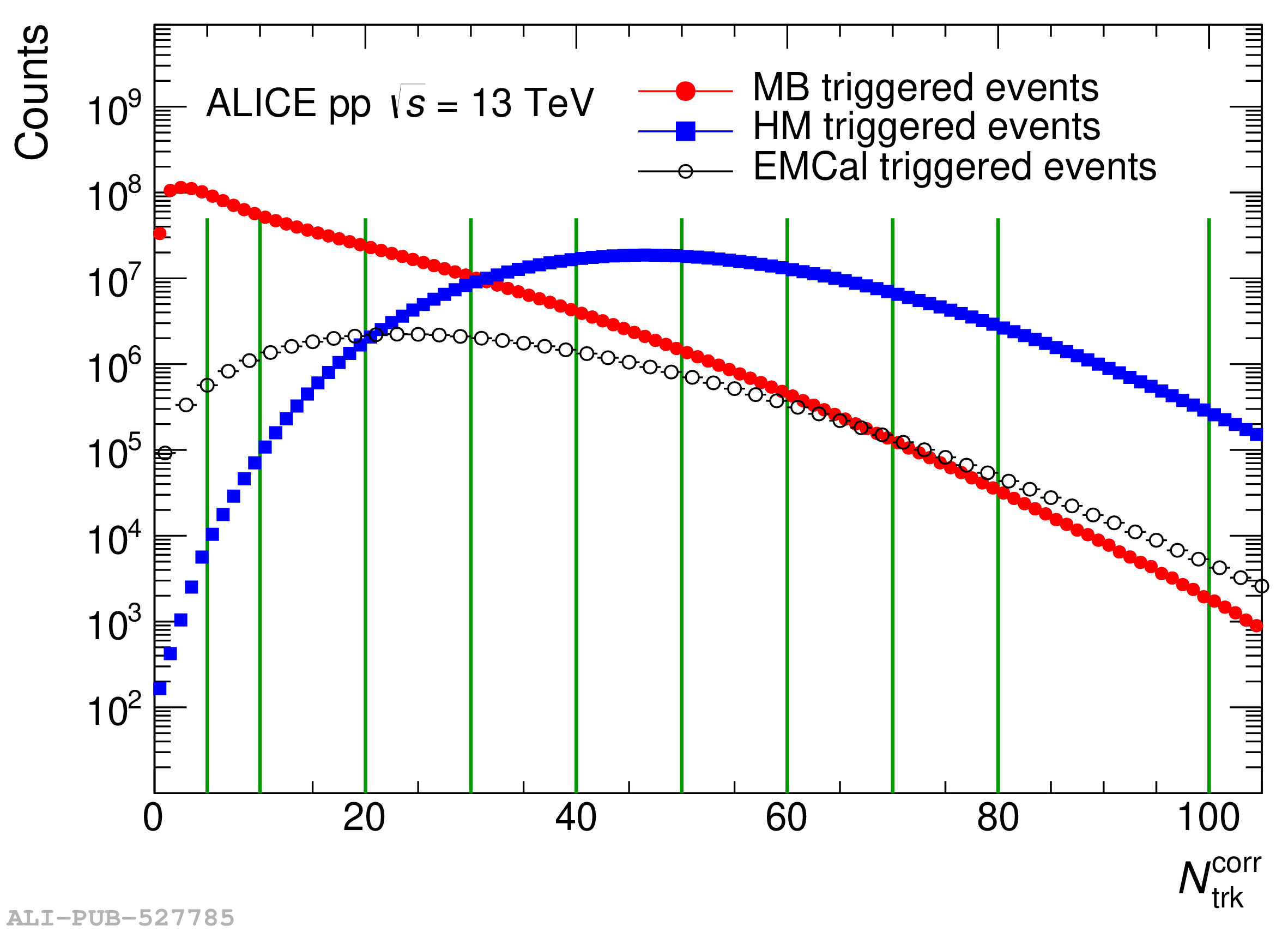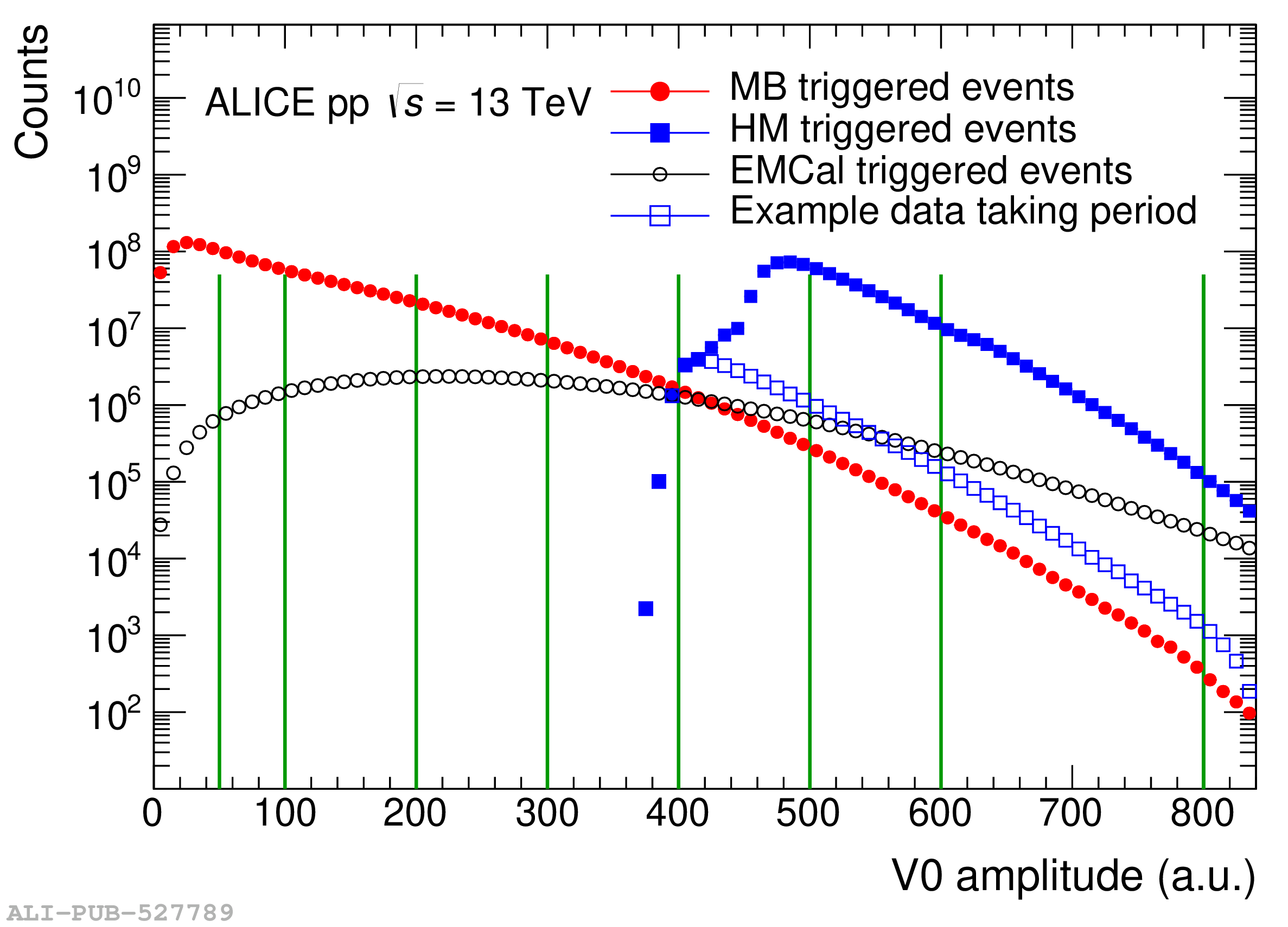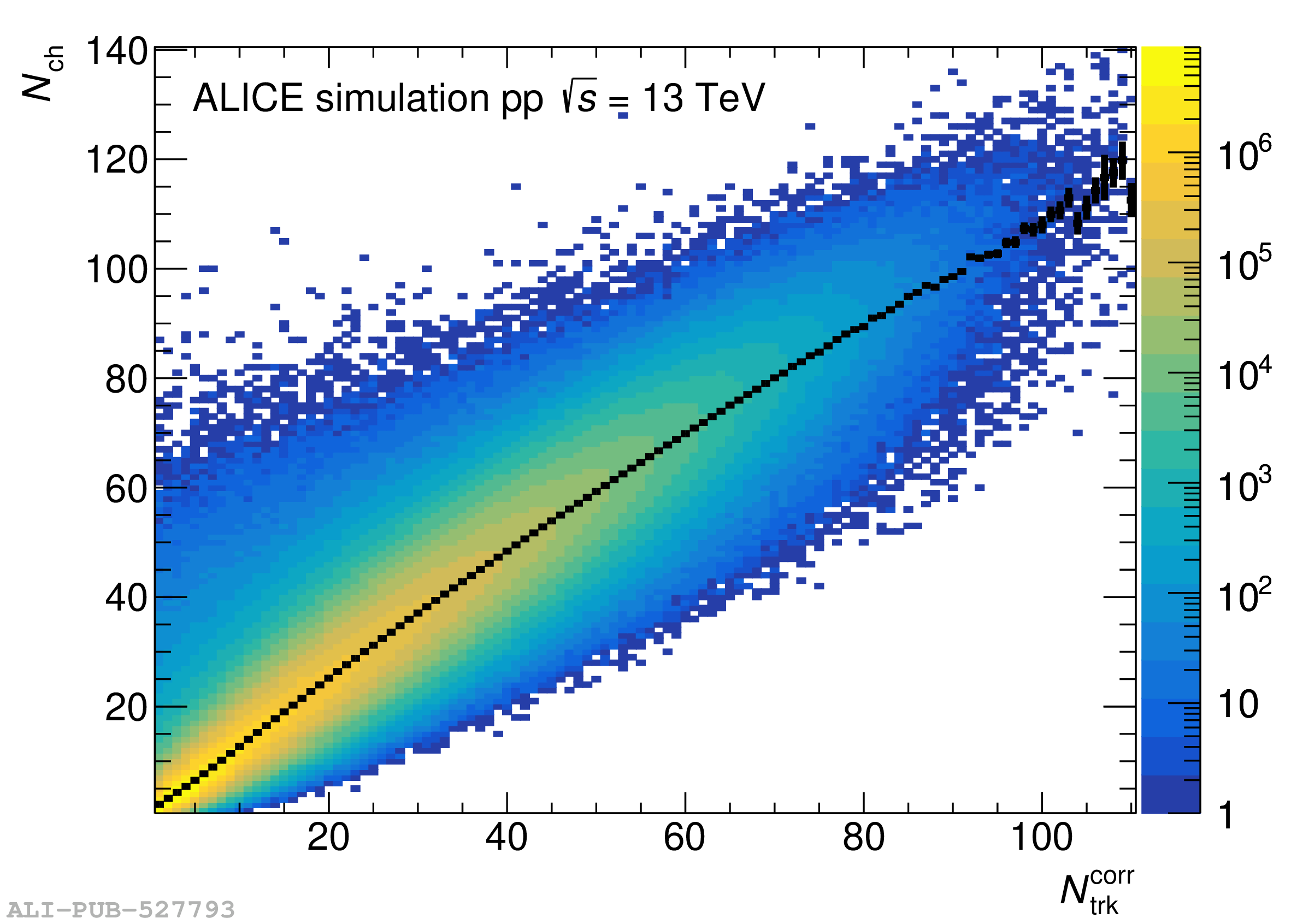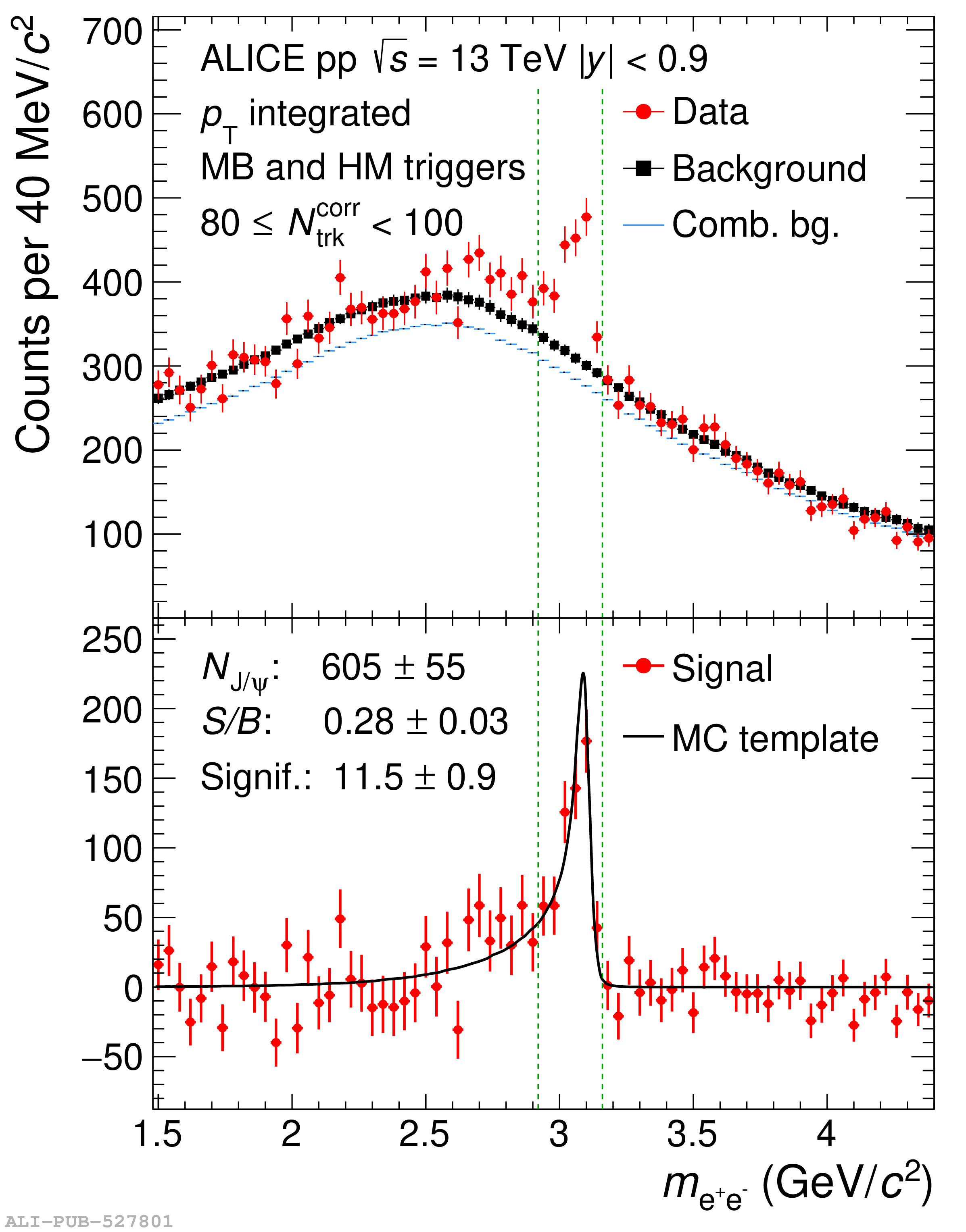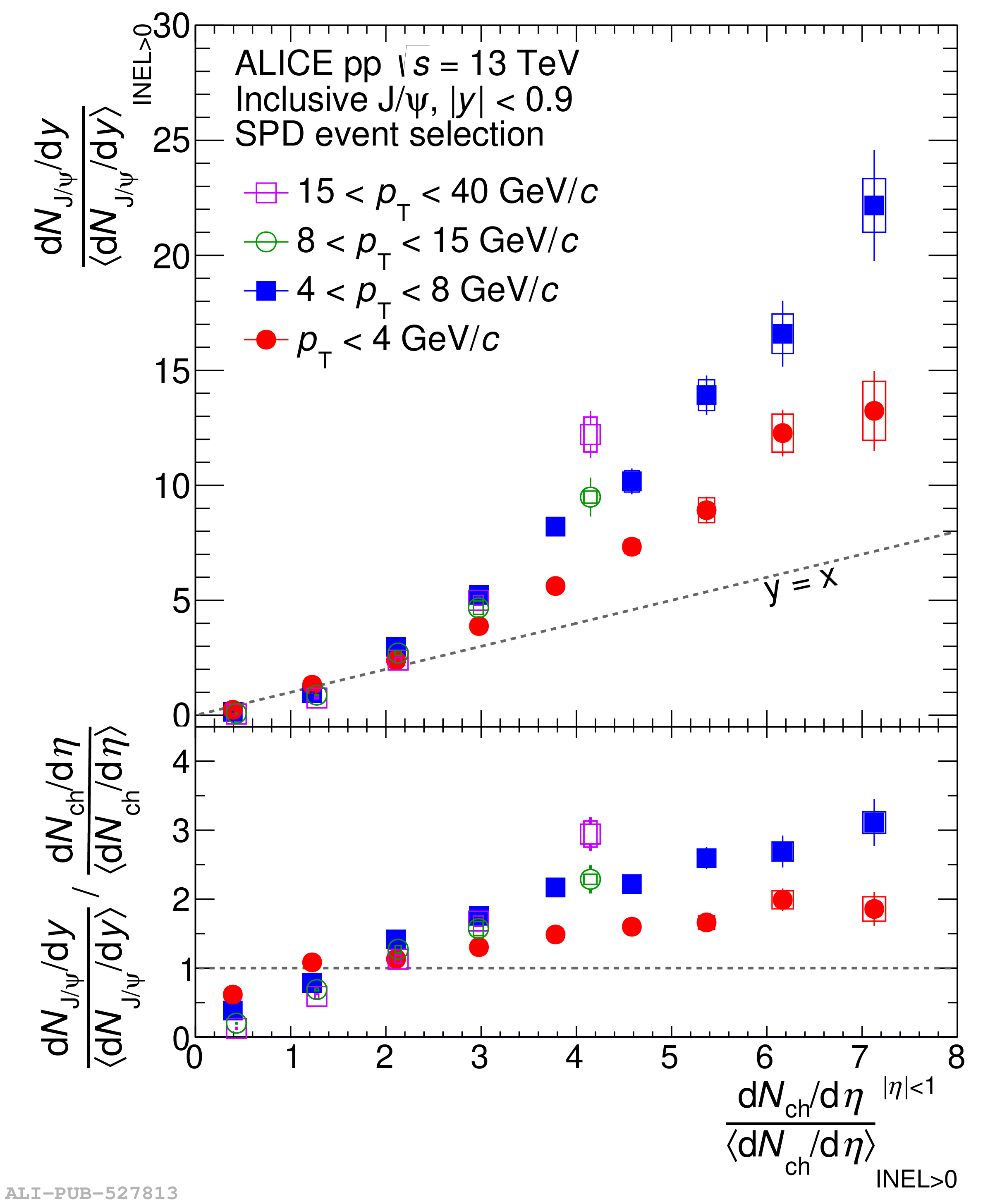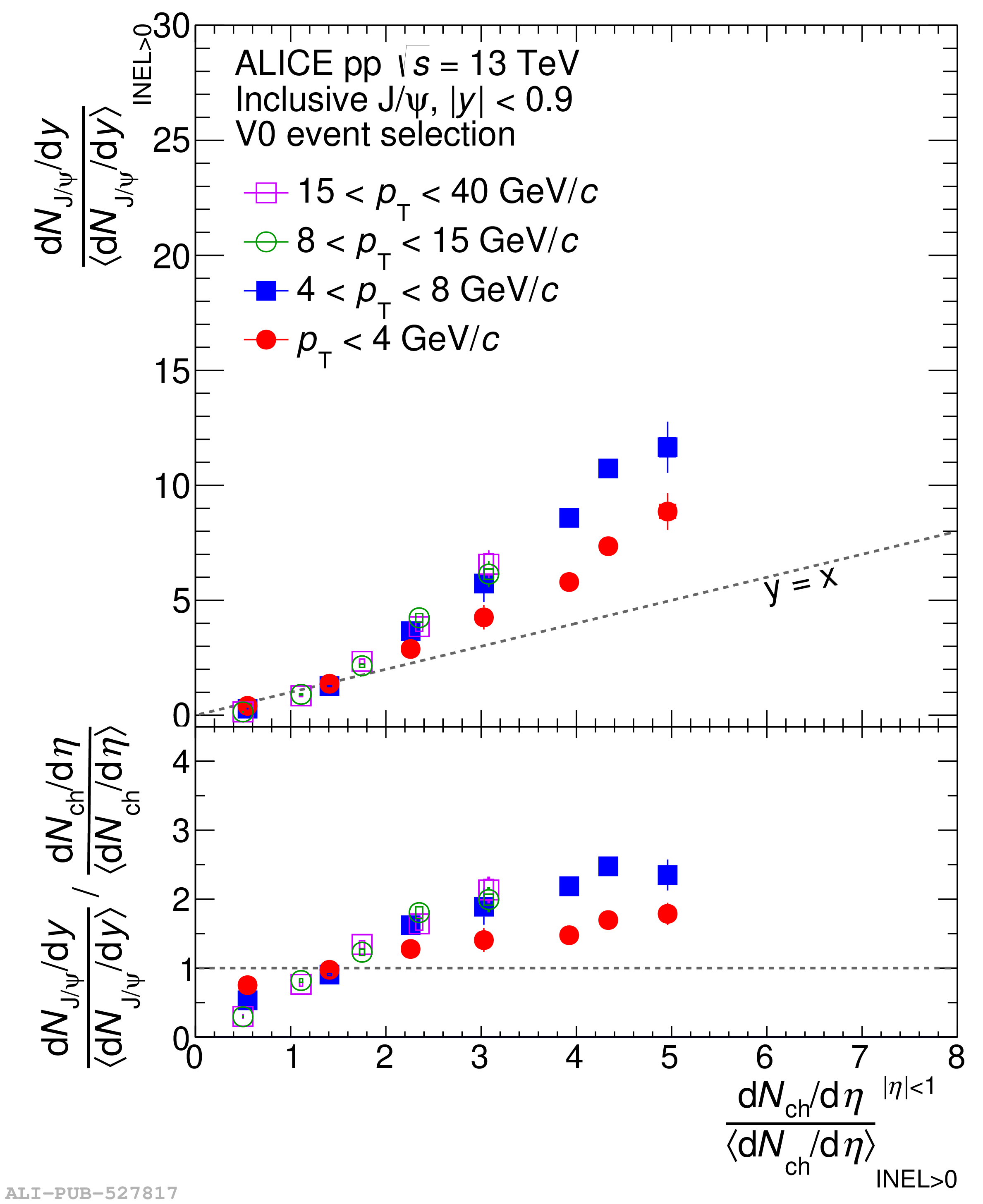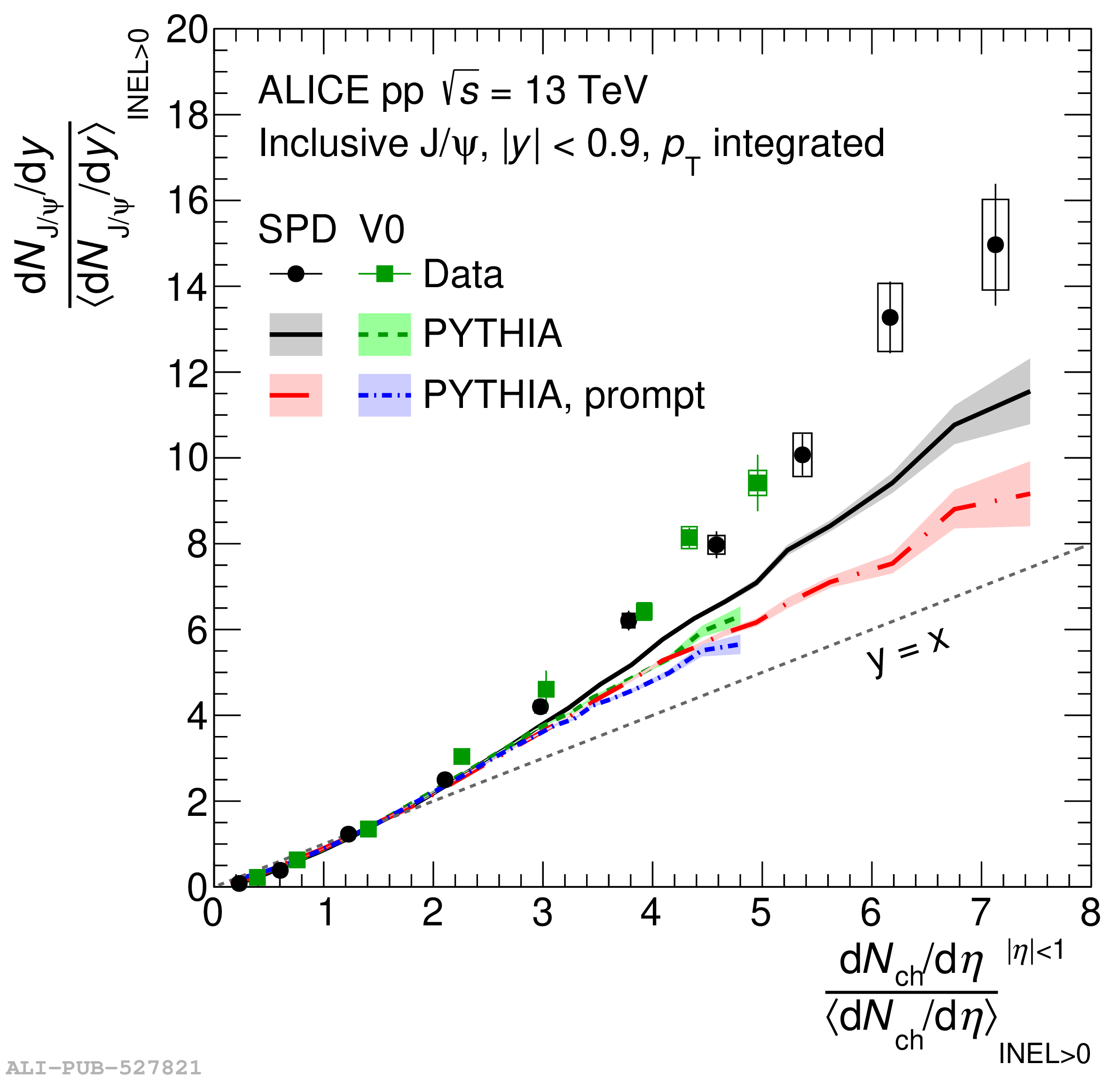Measurements of the inclusive J/$\psi$ yield as a function of charged-particle pseudorapidity density ${\rm d}N_{\rm ch}/\rm{d}\eta$ in pp collisions at $\sqrt{s}$ = 13 TeV with ALICE at the LHC are reported. The J/$\psi$ meson yield is measured at midrapidity ($|y|<~0.9$) in the dielectron channel, for events selected based on the charged-particle multiplicity at midrapidity ($|\eta|<~1$) and at forward rapidity ($-3.7<~\eta<~-1.7$ and $2.8<~\eta<~5.1$); both observables are normalized to their corresponding averages in minimum bias events. The increase of the normalized J/$\psi$ yield with normalized ${\rm d}N_{\rm ch}/\rm{d}\eta$ is significantly stronger than linear and dependent on the transverse momentum. The data are compared to theoretical predictions, which describe the observed trends well, albeit not always quantitatively.
PLB 810 (2020) 135758
HEP Data
e-Print: arXiv:2005.11123 | PDF | inSPIRE
CERN-EP-2020-088

